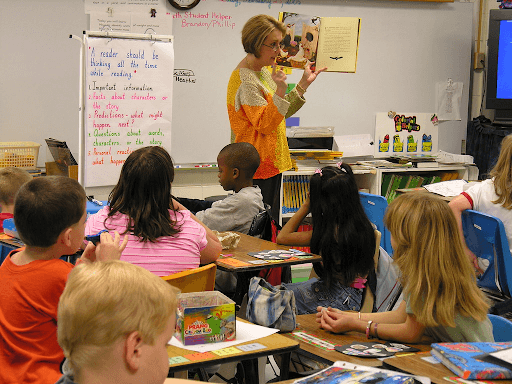A new UNESCO report highlights the importance of preparing teachers to implement equitable learning in the classroom.
Crises often accentuate the gaps of inequality that are present in our social circles. It is happening now in the educational system, where the pandemic has had significant repercussions concerning the equitable balance of learning. Because of our students’ diversity in gender, families, nationalities, religions, disabilities, and languages, institutions must ensure that they offer teaching methods that result in inclusive classes.
UNESCO explains that an education encompassing this kind of diversity means that “all children – no matter who they are – can learn together in the same school.” Concepts like this become transcendental when offering quality curricula that address different social contexts, addressing, for example, the thousands of students who cannot access an efficient internet network or for whom tutoring is not an available option.
The article, Teaching, Learning, and Inclusive Education: The Challenge of Teachers’ Training for Inclusion, mentions that this plurality of circumstances “requires adequate educational attention, […] and thus attention must turn towards diversity as the key issue for the education of all students.”
This kind of learning needs professors and teachers who can identify the elements that offer an open range of educational options for each student. This preparation requires institutions to provide continuous training and meaningful feedback that supports integrating new pedagogical skills into the classrooms.
“If urgent measures are not adopted, and investment is not increased, the learning crisis could turn into an educational catastrophe,” explains UNESCO Director-General Audrey Azoulay. In a statement, Azoulay declares, “To strengthen the resilience of teachers in times of crisis, all teachers should acquire the digital and pedagogical skills necessary to teach remotely.”
The role of teacher training in inclusive education
Despite how necessary teacher training is, experts say that directors of institutions in the middle- and high-income countries spend less than a quarter of their time on tasks and meetings related to curricula and teaching. The World Teachers’ Day 2020 Fact Sheet reports that the highest percentage of time is registered in Shanghai, China (27%) and the lowest in the Netherlands (11%). Also, few cases are known where teachers in these countries are granted a mentor.
Let us remember that these and many other countries committed themselves in 2015 to the 2030 Agenda impulsed by the United Nations in its fourth SDG (sustainable development goal) to ensure inclusive educational systems. Although some objectives have been attained, there is still a long way to go. If institutions want to address the gap in equity that has grown during this past year’s health crisis, it is essential to back systems that relevantly support their professors and teachers.
“If urgent measures are not adopted, and investment is not increased, the learning crisis could turn into an educational catastrophe.”
On October 5, UNESCO published the new document ‘Inclusive Teaching: Preparing all the Teachers to Teach all the Students’. It states that only four out of 10 countries have policies that ensure teacher training in inclusion, so it urges directors to take the necessary measures to improve these indicators.
Also, within those institutions where these policies exist, the practices carried out to ensure equitable learning are often not mentioned in-depth. The analysis conducted for the follow-up report about education in the world in 2020 based on PEER states that only one-third of the 10% of the countries mentioned above have informational resources on this training.
In Madagascar, for example, it is stated that the ratio of students per teacher is 240:1. Overcrowding in classrooms does not permit a personal approach and makes meetings at school more difficult. “The high number of students per qualified teacher makes classes have too many students and decreases the teachers’ ability to spend time with each student,” explains the UNESCO document.
On the other hand, educational inclusion in institutions should not be reduced to limited specialized training for one or two particular student groups. Still, it should be a teaching foundation for all. Even when this tool focuses on teaching students with disabilities (a frequent situation), it is affirmed that ” Persisting stigmas, unconducive school design, and a lack of teacher training and appropriate learning materials on inclusive education makes their access to school and learning even more difficult.”
However, UNESCO does note the progress made in implementing educational policies and programs focused on gender equity and identity. Some Latin American countries, like Chile, Colombia, and Ecuador, have incorporated transversal content on this subject into their teaching training policies.
Support mechanisms
A development like the above is only possible if the teaching faculty have active support from their institutional directors. The legal and regulatory frameworks that integrate them must rest on inclusive pedagogical support. It is also imperative that classrooms be equipped with diversified learning materials to meet the students’ needs.
The UNESCO document also emphasizes the crucial role of teaching assistants, directors, and coordinators in the students’ professional development. Their collaboration within an inclusive educational environment represents a unifying tool that transfers this desired climate type to the classroom.
Translation by Daniel Wetta.
This article from Observatory of the Institute for the Future of Education may be shared under the terms of the license CC BY-NC-SA 4.0 
)
)

)